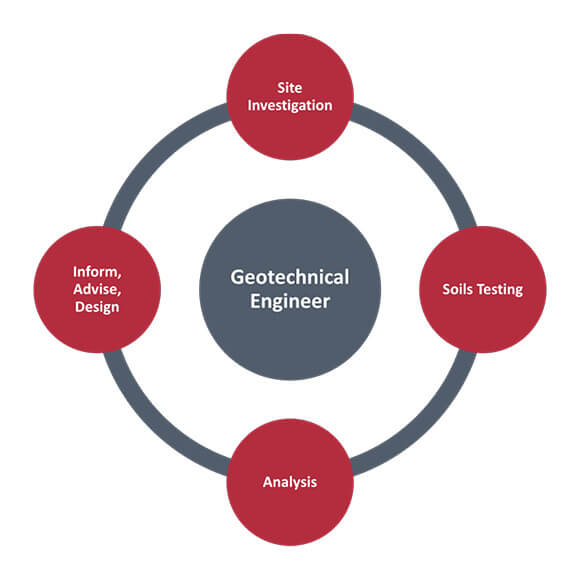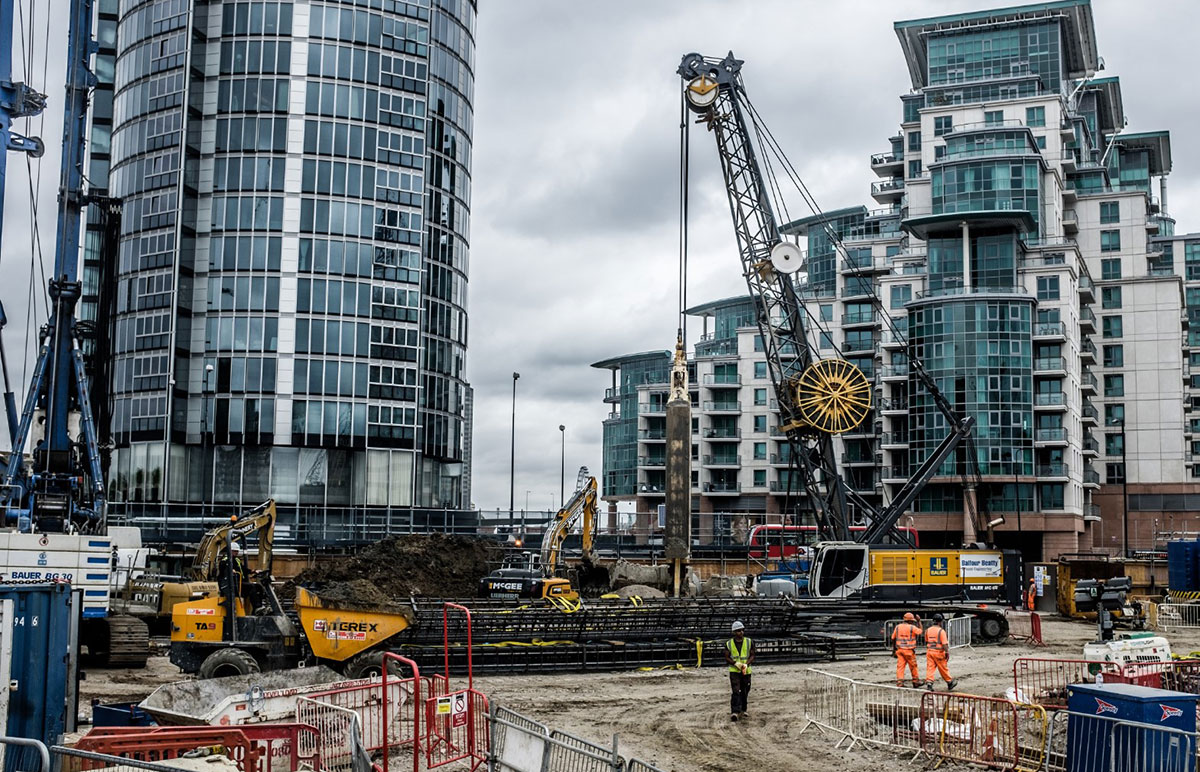The smart Trick of Geotheta That Nobody is Talking About

A geotechnical designer is a specialized civil engineer that concentrates on the habits of dirt, rock, and other products located below the Planet's surface area. They use scientific principles and design methods to analyze the properties and behavior of these materials to support the secure and efficient style, construction, and maintenance of framework tasks.
They perform website investigations, accumulate samples, execute laboratory examinations, and analyze data to examine the viability of the ground for building and construction tasks - Consulting Engineer. Based upon their searchings for, geotechnical designers provide suggestions for structure style, incline stability, maintaining structures, and reduction of geotechnical hazards. They work together with various other experts, such as engineers, structural designers, and construction teams, to make sure that geotechnical factors to consider are integrated into the total task design and application
By analyzing the habits and residential or commercial properties of dirt and rock, they can recognize possible geotechnical threats such as landslides, dirt negotiation, or incline instability. Their knowledge assists avoid failures or accidents that could jeopardize lives and property. Below are some in-depth duties and obligations of a geotechnical engineer: Website Investigation: Geotechnical engineers conduct website examinations to gather information on subsurface conditions.
They analyze the information to recognize the residential or commercial properties and habits of the dirt and rock, including their strength, leaks in the structure, compaction attributes, and groundwater conditions. Geotechnical Analysis and Layout: Geotechnical engineers examine the information accumulated throughout website examinations to analyze the security and suitability of the site for building projects. They perform geotechnical calculations and modeling to review factors such as birthing capacity, negotiation, incline security, side earth pressures, and groundwater circulation.
Not known Incorrect Statements About Geotheta
Structure Design: Geotechnical designers play a crucial duty in making foundations that can securely support the intended structure. They assess the dirt problems and load requirements to figure out the ideal foundation type, such as superficial foundations (e.g., grounds), deep foundations (e.g (https://penzu.com/p/952dfde2dba9ee4f)., stacks), or specialized strategies like soil enhancement. They think about factors such as negotiation restrictions, bearing capacity, and soil-structure communication to establish optimum foundation designs
They examine building plans, monitor site tasks, and carry out field inspections to validate that the style suggestions are followed. If unpredicted geotechnical concerns occur, they assess the scenario and supply suggestions for remediation or modifications to the layout. Danger Analysis and Mitigation: Geotechnical designers evaluate geotechnical risks and threats linked with the job site, such as landslides, liquefaction, or dirt disintegration.

Partnership and Interaction: Geotechnical designers function carefully with various other experts involved in a task, such as architects, architectural engineers, and building and construction groups. Effective interaction and partnership are necessary to incorporate geotechnical considerations right into the total task style and building and construction procedure. Geotechnical designers offer technological experience, solution here are the findings questions, and make sure that geotechnical requirements are satisfied.
The Best Strategy To Use For Geotheta
Right here are some kinds of geotechnical designers: Foundation Engineer: Structure engineers concentrate on designing and examining structures for structures. They analyze the dirt problems, load requirements, and site qualities to figure out one of the most appropriate foundation kind and design, such as superficial foundations, deep structures, or specialized methods like stack structures.
They assess the variables influencing slope stability, such as dirt residential properties, groundwater problems, and incline geometry, and create approaches to avoid slope failings and reduce dangers. Quake Designer: Quake designers specialize in assessing and creating structures to stand up to seismic forces. They assess the seismic risk of a site, examine soil liquefaction capacity, and develop seismic design criteria to ensure the safety and strength of structures during quakes.
They do area testing, collect examples, and assess the gathered data to characterize the dirt properties, geologic developments, and groundwater problems at a website. Geotechnical Instrumentation Engineer: Geotechnical instrumentation engineers concentrate on surveillance and measuring the actions of soil, rock, and structures. They set up and preserve instrumentation systems that keep track of aspects such as dirt settlement, groundwater degrees, slope activities, and structural displacements to assess efficiency and give early cautions of prospective issues.
What Does Geotheta Mean?
They tend to be investigative individuals, which implies they're intellectual, reflective, and inquisitive. They wonder, systematic, rational, analytical, and sensible. Several of them are additionally social, meaning they're kind, charitable, cooperative, individual, caring, practical, understanding, sensible, and pleasant. Does this noise like you? Take our cost-free job test to discover if geotechnical designer is one of your top profession matches.
In the workplace atmosphere, geotechnical engineers utilize specialized software devices to do computations, create designs, and analyze data. They prepare reports, evaluation task specs, communicate with clients and staff member, and coordinate task tasks. The workplace setting offers a favorable environment for research, analysis, and cooperation with various other experts associated with the project.
5 Simple Techniques For Geotheta
They often visit project websites to perform site investigations, assess geotechnical problems, and collect data for evaluation. These sees include traveling to different locations, often in remote or challenging terrains. Geotechnical engineers might perform soil tasting, conduct tests, and monitor building tasks to guarantee that the geotechnical facets of the task are being executed properly.
Geotechnical designers additionally function in specialized geotechnical labs. Geotechnical research laboratory designers work extensively in these environments, managing screening equipment, running tools, and taping data.
Comments on “Not known Facts About Geotheta”